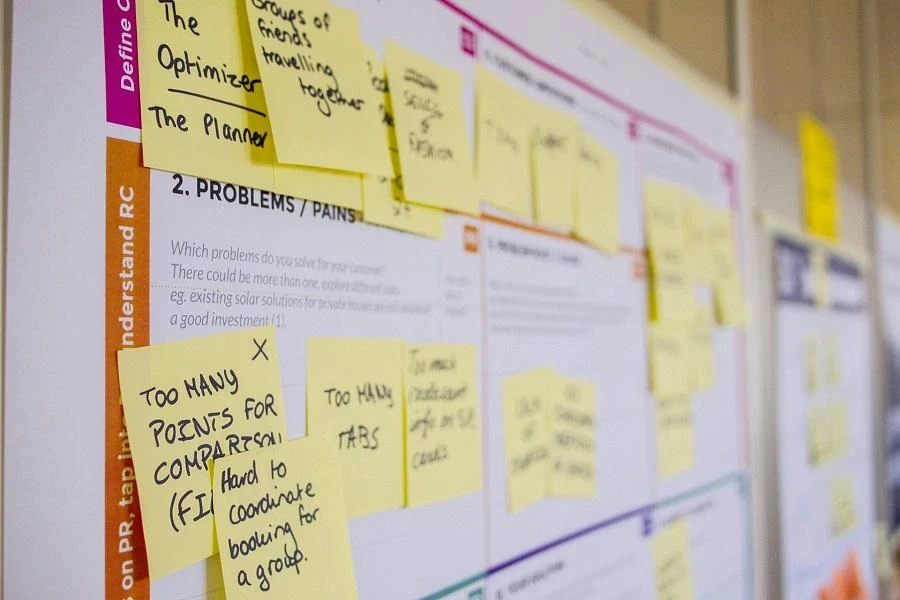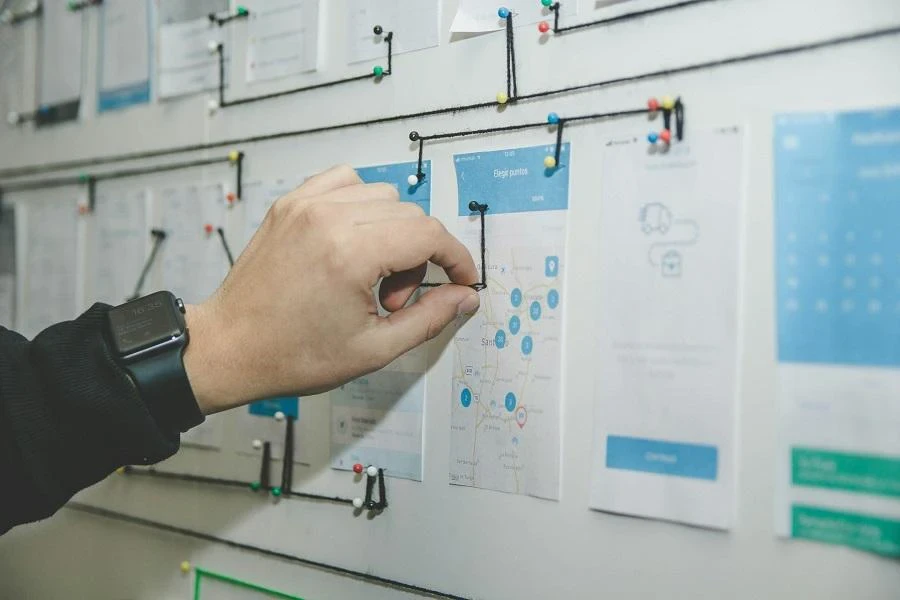Imagine having a detailed blueprint for all potential ups and downs among logistics issues, supply disruptions, and even inventory scenarios to safeguard a business. While this may sound like a distant fantasy, the concept of scenario planning, a strategic method developed in the 1950s and began to be adopted by the commercial world in the 1970s, has indeed provided certain insights for potential events for quite some time, including relevant strategies to tackle them in advance.
Today, with technological advancements, supply chain scenario planning has reached new heights, aiding in handling uncertainties and providing more future-proof strategic supply chain planning. Continue reading to find out what supply chain uncertainties are, how scenario planning is applied in supply chains, and how it is further empowered by advanced technologies.
Table of Contents
1. Understanding supply chain uncertainty
2. Scenario planning in supply chains
3. Empowering scenario planning through technology
4. Navigating uncertainty with foresight
Understanding supply chain uncertainty

“If life were predictable it would cease to be life, and be without flavor.” — Eleanor Roosevelt once famously talked about this, which intriguingly adds flavor to uncertainties. However, it’s in human nature to fear uncertainties, according to studies. Yet it is a well-recognized fact by researchers on the importance of defining and categorizing uncertainties, which serves as the foundational step to plan for more informed and effective strategies to handle them.
In supply chain management, while there can be quite a long list of issues just as in any other field, the following stand out as they are highly impactful and can be particularly effective in addressing scenario planning to explore multiple future possibilities and complex interdependencies.
Geopolitical tensions represent one of the most significant uncertainties in global supply chains nowadays. Examples include the Red Sea Crisis caused by the Houthi rebel attacks on cargo ships, as well as the conflict in Ukraine, which have resulted in international freight transportation disruptions and trade interruptions. These ongoing issues as of June 2024 have led to a significant decrease in traffic through the Suez Canal and Black Sea ports, with increased use of alternative routes. Such changes greatly alter regional shipping routes, causing unwanted delays and increased costs.

Next on the list of uncertainties in the supply chain, while it may sound a bit cliché, is economic uncertainty. In fact, the World Economic Forum (WEF), a global independent non-governmental organization, reported that the economy would remain mostly characterized by uncertainty in 2024. As a result, most businesses must stay more vigilant in their expenditure and budgeting, indirectly affecting and impacting supply chain management approaches and strategies.
Highly related to such economic uncertainties are changing customer expectations and demands, primarily driven by inflation caused by rising prices worldwide due to various reasons, including the aftermath of the past few years of disruptions in the global health industry. These fluctuating demands highlight challenges and the swift adjustments needed in supply chain arrangements in order to adapt accordingly.
Altogether, all of the above add challenges in supply and inventory management, which have a direct impact on global supply chain management. Several supply delays and logistical constraints threaten optimal inventory levels, while inflation rates also lead to increased costs in both raw materials and manpower. Coping with these complexities calls for strategic planning and adaptability in supply chain operations.
Scenario planning in supply chains

Just as scenario planning is used to visualize, create, and analyze relevant scenarios about different possible uncertainties to help different stakeholders anticipate and prepare for various potential cases with appropriate strategies in advance, supply chain scenario planning helps businesses prepare for multiple potential cases, especially in terms of supply chain disruptions and risks.
Businesses can either work on envisioning multiple scenarios and prepare the relevant strategies for them or focus only on core, relevant scenarios. The main purpose of such planning is to identify potential risks and disruptions in a more realistic and structured way and get ready for prompt and effective responses to handle the issues in advance.

The steps of implementing supply chain scenario planning normally start by analyzing the key trends driven by both internal and external factors to identify the critical uncertainties involved. Only when the applicable, relevant uncertainties are identified can companies go on to work out scenarios based on them. Companies can then develop and refine the relevant strategies through different scenario tests and subsequently, develop actionable response plans for each scenario based on the adopted strategies.
In general, the scenario planning approach that focuses on different scenarios such as best-case (optimistic) and worst-case (pessimistic) or average/most likely (best guess) scenarios helps to create comprehensive strategies based on a variety of common supply chain uncertainties. These include geopolitical disruptions, economic downturns, labor shortages, and even natural disasters. The advancement in technology has made scenario planning tasks easier and more reliable nowadays, further enriching and diversifying it.
Empowering scenario planning through technology
Data processing and predictive analytics

Technology is transforming supply chain scenario planning through a revolutionary approach to data collection, analysis, and usage with three keywords in mind: speed, proactiveness, and accuracy. The speed of data processing is embodied through real-time data feeds and rapid data processing capabilities enabled by generative AI and advanced analytics technology.
These real-time data and advanced analytics tools enable companies to analyze large amounts of data quickly, aligning with current trends instead of outdated information. The rapid in-depth analysis can make the entire decision-making process in scenario planning models faster and allow for the early detection of potential issues.
Meanwhile, predictive analytics features enabled by AI technology are also setting a new standard in proactive approaches. Proactive predictions of future demands and potential disruptions are made possible as AI and Machine Learning can now integrate internal and external data sources when forecasting. Consequently, companies can now anticipate and analyze multiple potential scenarios rather than rely solely on the traditionally reactive historical data-based approach.
In a nutshell, the trend organization and categorization abilities of AI also help prioritize which scenarios to plan for based on their impact and probability, which greatly improves data accuracy, including prediction and operational precision.
Digital twins for real-time simulation

Digital twins are dynamic virtual replicas of physical objects or systems, often connected to the original counterparts through sensors and IoT devices to mirror real-time behavior and allow for predictive analysis and optimization. Digital twins offer a pragmatic way to simulate various scenarios for strategic decision-making without risking disruptions to actual operations while still getting realistic results. Employing techniques like sensitivity analysis, these digital replicas of physical supply chains can use scenario modeling to plan for different time horizons and growth profiles to recognize various critical variables that affect outcomes.
These digital twins serve as testbeds to simulate diverse scenarios for different strategies experiments. These replicas are connected to data from many different sources, including IoT sensors, ERP systems, and customer feedback within a supply chain network. They are also configured with the same parameters and financial goals and linked to operational systems for real-time monitoring of the end-to-end supply chain.
In essence, these digital models can help the stakeholders make informed decisions, even in complex situations such as in decisions involving buying or leasing supply chain or logistical assets, or when deciding between whether to insource or outsource their logistics operation. Overall, these digital twins transform scenario planning with real-time simulations to identify optimal strategies for both potential and future challenges.
Continuous advancements in AI and Machine Learning

Besides data processing speed, volume capacity, and prediction accuracy, AI and Machine Learning also add more value to supply chain scenario planning through ongoing improvements. This is in fact in line with the inherent machine learning techniques and AI simulations. These attributes make them capable of creating new, unknown, and unique scenarios, which can significantly enhance the effectiveness of “what if” scenario creations to better anticipate and manage potential disruptions.
Consequently, AI and Machine Learning can continuously refine the scenario creation process, including the development of distinctive and comprehensive narratives per each scenario, on top of forming any updated, relevant strategies. The emergence of AI tools that are able to provide constant, ongoing evaluations of strategies also helps to ensure timely and appropriate assessment for updated solutions from time to time.
Navigating uncertainty with foresight

Supply chains today have to deal with a great deal of uncertainties. Geopolitical tensions, economic instability, shifting customer demands, and challenges in supply and inventory management are among the uncertainties that stakeholders in supply chains must consider and plan for, taking appropriate proactive actions to address them accordingly.
Scenario planning is one of the most powerful and structured approaches to prepare businesses for these uncertainties in the supply chain. Through comprehensive simulations of a wide range of possible events, multiple potential scenarios can be projected and analyzed to allow companies to develop relevant strategies to navigate uncertainties.
Today, advanced technologies are significantly enhancing the effectiveness of scenario planning. Data and predictive analytics, digital twins, and continuous advancements in AI and machine learning are among the technologies that can further empower and refine scenario planning models to adapt to the constantly changing global economy.
For more logistics knowledge, fresh wholesale business ideas, and detailed sourcing guides, visit Chovm.com Reads often to discover a plethora of resources.

Looking for a logistics solution with competitive pricing, full visibility, and readily accessible customer support? Check out the Chovm.com Logistics Marketplace today.




